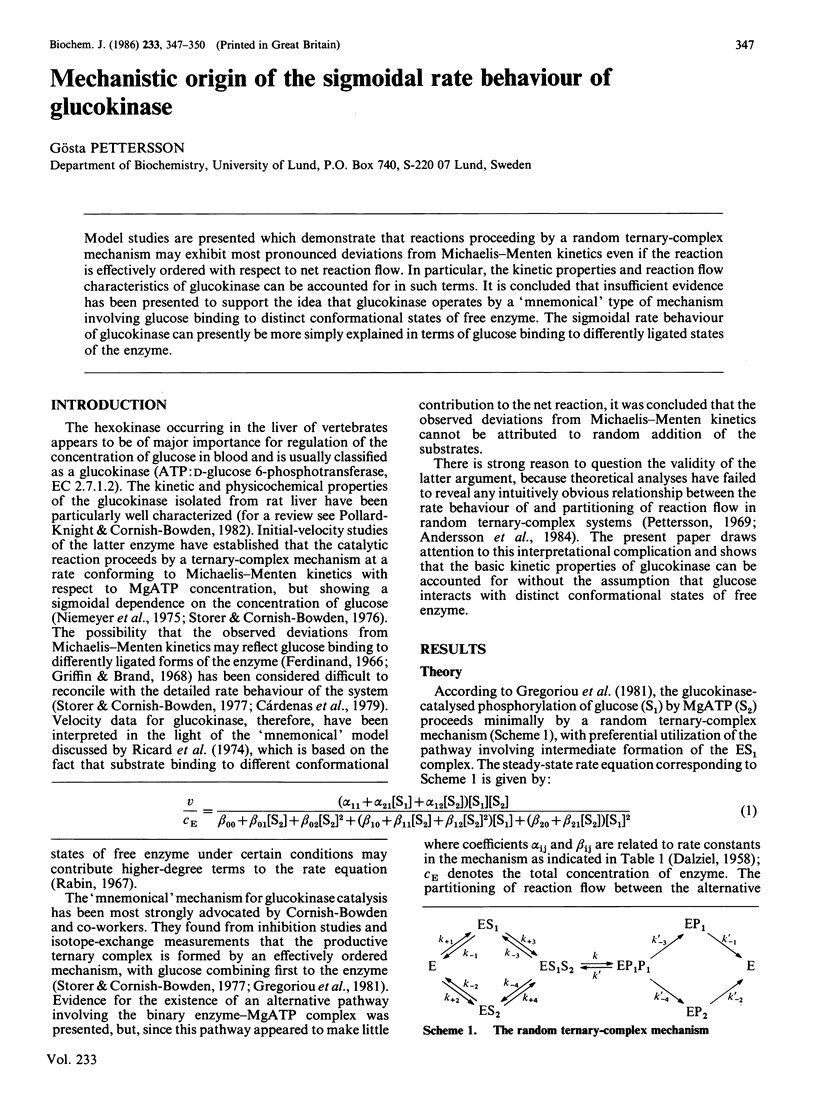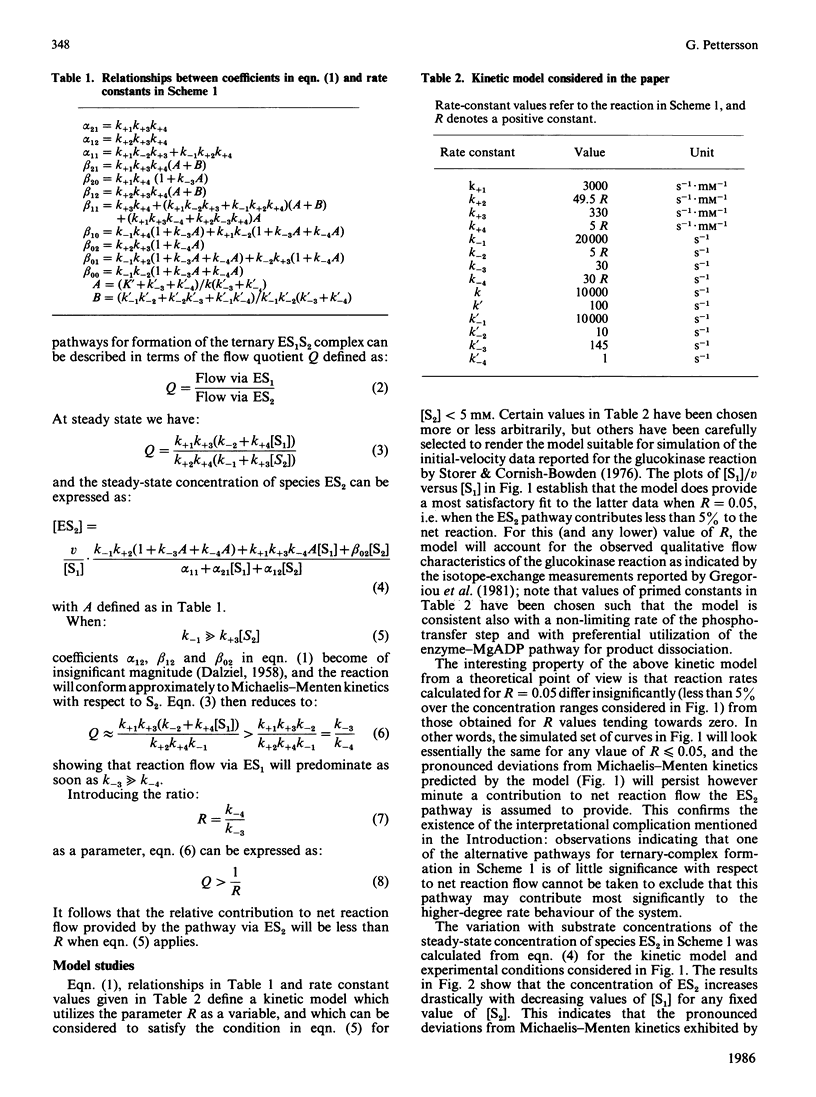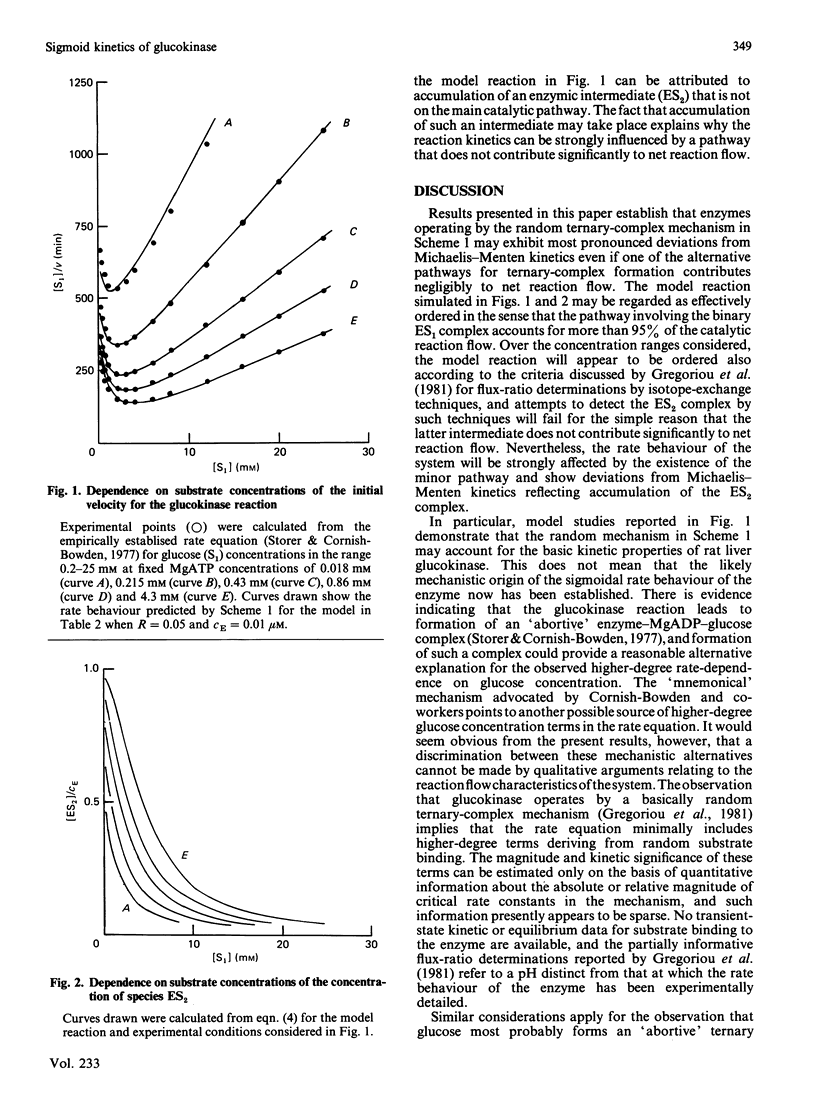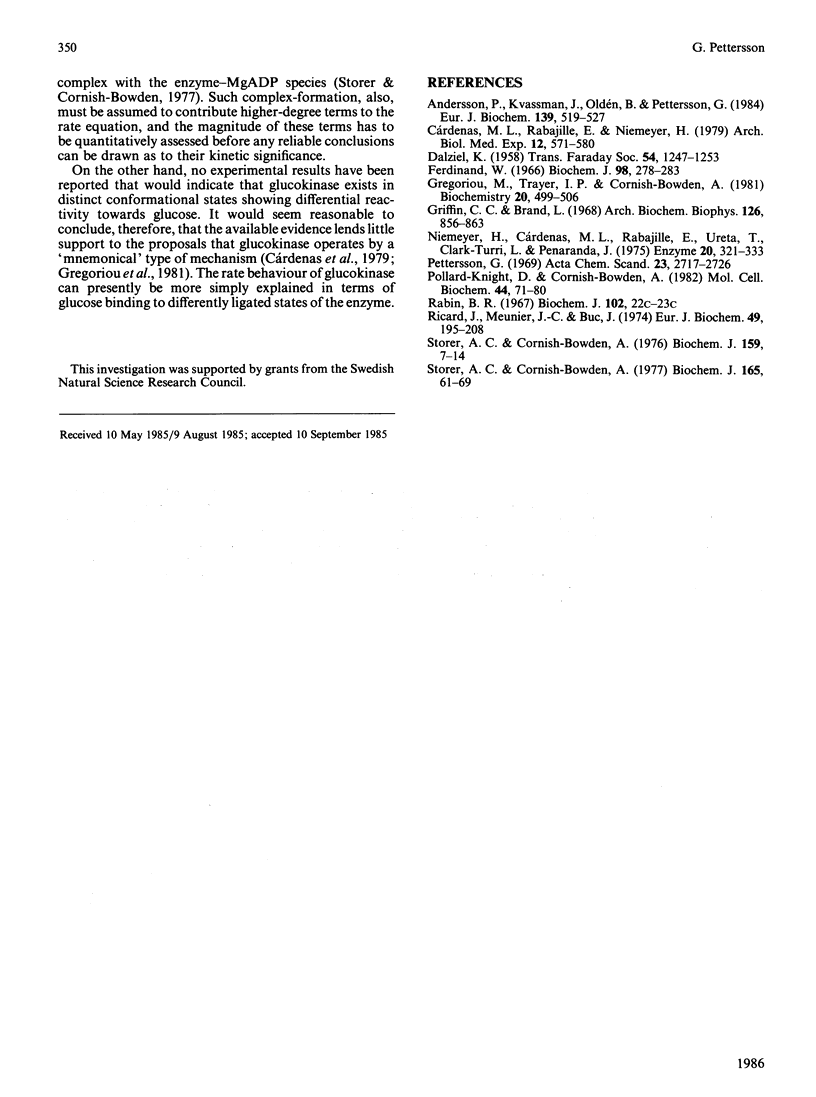Abstract
Model studies are presented which demonstrate that reactions proceeding by a random ternary-complex mechanism may exhibit most pronounced deviations from Michaelis-Menten kinetics even if the reaction is effectively ordered with respect to net reaction flow. In particular, the kinetic properties and reaction flow characteristics of glucokinase can be accounted for in such terms. It is concluded that insufficient evidence has been presented to support the idea that glucokinase operates by a 'mnemonical' type of mechanism involving glucose binding to distinct conformational states of free enzyme. The sigmoidal rate behaviour of glucokinase can presently be more simply explained in terms of glucose binding to differently ligated states of the enzyme.
Full text
PDF



Selected References
These references are in PubMed. This may not be the complete list of references from this article.
- Andersson P., Kvassman J., Oldén B., Pettersson G. Catalytic significance of binary enzyme-aldehyde complexes in the liver alcohol dehydrogenase reaction. Eur J Biochem. 1984 Mar 15;139(3):519–527. doi: 10.1111/j.1432-1033.1984.tb08036.x. [DOI] [PubMed] [Google Scholar]
- Cárdenas M. L., Rabajille E., Niemeyer H. Kinetic cooperativity of glucokinase with glucose. Arch Biol Med Exp (Santiago) 1979 Dec;12(5):571–580. [PubMed] [Google Scholar]
- Ferdinand W. The interpretation of non-hyperbolic rate curves for two-substrate enzymes. A possible mechanism for phosphofructokinase. Biochem J. 1966 Jan;98(1):278–283. doi: 10.1042/bj0980278. [DOI] [PMC free article] [PubMed] [Google Scholar]
- Gregoriou M., Trayer I. P., Cornish-Bowden A. Isotope-exchange evidence for an ordered mechanism for rat-liver glucokinase, a monomeric cooperative enzyme. Biochemistry. 1981 Feb 3;20(3):499–506. doi: 10.1021/bi00506a009. [DOI] [PubMed] [Google Scholar]
- Griffin C. C., Brand L. Knetic implications of enzyme-effector complexes. Arch Biochem Biophys. 1968 Sep 10;126(3):856–863. doi: 10.1016/0003-9861(68)90479-7. [DOI] [PubMed] [Google Scholar]
- Niemeyer H., de la Luz Cárdenas M., Rabajille E., Ureta T., Clark-Turri L., Peñaranda J. Sigmoidal kinetics of glucokinase. Enzyme. 1975;20(6):321–333. doi: 10.1159/000458957. [DOI] [PubMed] [Google Scholar]
- Pollard-Knight D., Cornish-Bowden A. Mechanism of liver glucokinase. Mol Cell Biochem. 1982 Apr 30;44(2):71–80. doi: 10.1007/BF00226892. [DOI] [PubMed] [Google Scholar]
- Ricard J., Meunier J. C., Buc J. Regulatory behavior of monomeric enzymes. 1. The mnemonical enzyme concept. Eur J Biochem. 1974 Nov 1;49(1):195–208. doi: 10.1111/j.1432-1033.1974.tb03825.x. [DOI] [PubMed] [Google Scholar]
- Storer A. C., Cornish-Bowden A. Kinetic evidence for a 'mnemonical' mechanism for rat liver glucokinase. Biochem J. 1977 Jul 1;165(1):61–69. doi: 10.1042/bj1650061. [DOI] [PMC free article] [PubMed] [Google Scholar]
- Storer A. C., Cornish-Bowden A. Kinetics of rat liver glucokinase. Co-operative interactions with glucose at physiologically significant concentrations. Biochem J. 1976 Oct 1;159(1):7–14. doi: 10.1042/bj1590007. [DOI] [PMC free article] [PubMed] [Google Scholar]


